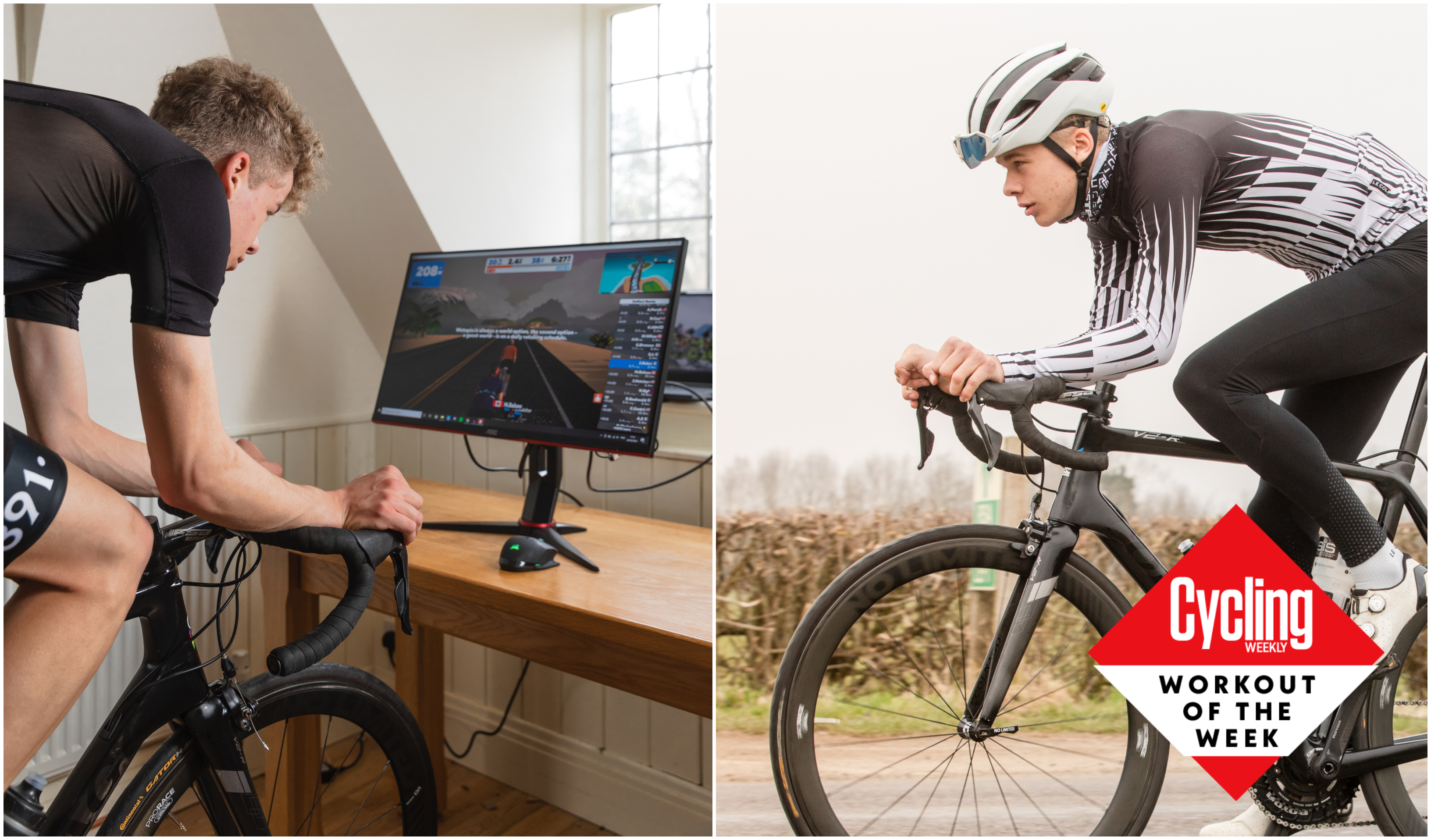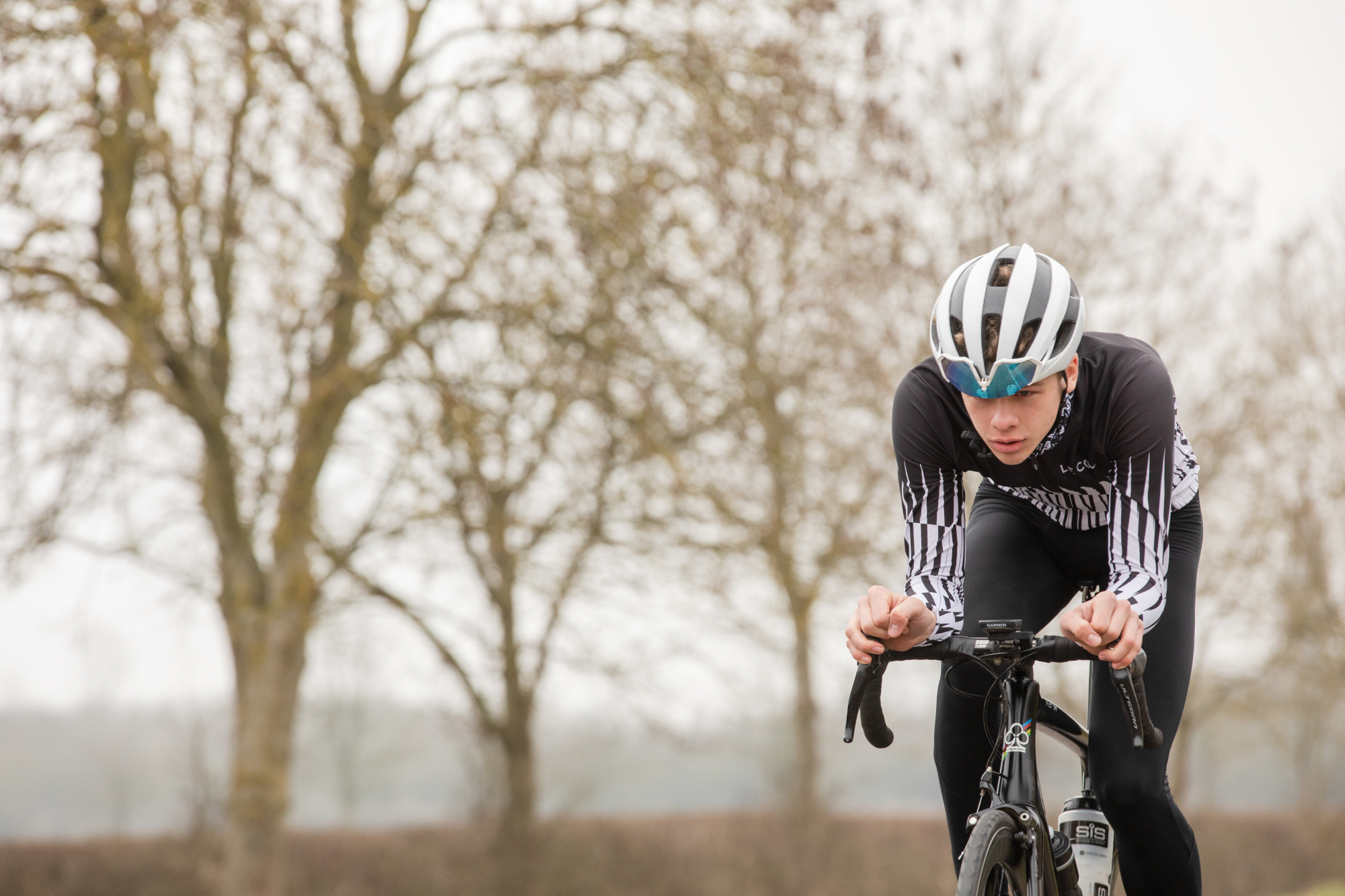Cycling workout of the week #5: Under/Overs – improve your ability to recover while still pushing the pace [59 mins]
Do if…you want to improve your threshold power and your capacity to recover at higher intensities


The goal of this cycling workout is not only to help us perform at intensities above Crticial Power, but also to aid recovery from high intensity efforts. For example, if you’ve pushed hard on a steeper section of a climb and then want to recover on a flatter section whilst still keeping some intensity. The benefits of this workout could be valuable either in a race situation or on any climb you’re looking to improve your time on.
What's coming up? So this week’s cycling workout involves a longer warm up of 15 minutes followed by a block of one minute at 110/120 per cent of Critical Power (CP), then two minutes at 95 per cent of CP, times four (12 minute total block). 10 minutes recovery, then repeat the 'under/over' block, with a 10 minute cool down to finish off.
Critical Power is an alternative to FTP for setting training zones, find out how to get your numbers and use them in our explainer on Critical Power here.
The workout
To download the session click on the embedded graph above. If you’re not already set up on TrainerDay it’ll ask you to register for an account - it’s free to do so and it’s free to download the session.
Simply explained
When we do hard efforts, we need some time to recover from them. But if we’re riding up a long climb or during a race, sometimes we have to try and recover at a pace that itself is still quite high.
Riding at 110-120 per cent of CP is a hard effort and, for a lot of people, is in their Maximal Aerobic Power (MAP) range, so is not sustainable for long as it will drain our Watts Prime (W’) - more information on this metric and how it’s beneficial for training can be found in our explainer on Critical Power here as the two metrics go hand in hand.
To counter this, the effort will only be for one minute before we dip just below CP. Even though this is still a hard effort, it does allow us to recharge our W’ sufficiently so that we can complete several more of these 'under/over' efforts.
The latest race content, interviews, features, reviews and expert buying guides, direct to your inbox!
The reason we have a range of 110 to 120 per cent of CP is that, for different individuals, their W’ in relation to their CP may be smaller – or their MAP might be a lower percentage of their CP.
Doing these sorts of efforts not only gives us a training stimulus to improve our CP or sustainable threshold power - it also helps us to recover at higher intensities where heart rate (HR) remains elevated and likely will not drop much.
Let’s geek out…
So, let’s take a rider with a CP of 300 watts (W) and a W’ of 15000 joules (J). They'll be doing one minute at 360 W (120 per cent CP) leaving their W’ at 11400 J. Then, after two minutes at 285 W (95 per cent CP), their W’ is recharged to 13200 J. Theoretically, using this model (which is referred to as W’bal) means that, during effort eight, the rider empties their W’ and is unable to complete it. However, factors such as heat, pain resistance – and anything else that contributes to fatigue – mean that failure to complete an effort often occurs earlier than predicted.
During the 'over' section, our HR will be significantly elevated and, although it can decrease slightly during the 'under' section, it still remains quite high compared to the level we’d normally be accustomed to during the recovery period. Quite often, this results in us hitting a plateau and reaching our VO2max - the point at which our oxygen consumption is at its maximal level. So, not only can these sessions help with maintaining high power for extended periods and recovery at high intensities, but they can also assist in improving our maximal capacity aerobic performance.
Golden rule
Don’t overdo it too soon. It can be easy to get carried away with the first few ‘overs’, which will lead to either having to decrease the power for the other ‘overs’ or decrease it during the ‘unders’, both of which defeat the purpose of the session.
After the first block, if it felt a bit easy at say 110-115 per cent CP, then increase to 120 per cent for the next block.
Sunny out? How about…

These sessions can be done outdoors but, because the effort blocks are a bit longer, it is very important to find either a good uninterrupted stretch of undulating road with minimal potential for possible disruptions, or a 12 to 15 minute climb.
A local time trial course often provides a good bit of road to complete the efforts on but, for a lot of people, a longer climb may present a slightly easier way to hit the power targets as the positive gradient provides consistent resistance. However, the ability to put high power down on the flats is very important, especially for time triallists and other racers, so mixing up the terrain you complete this cycling workout on is also advisable.
Looking for another? How about...
- Cycling workout of the week #1: 20/40s [50 mins]
- Cycling workout of the week #2: Glycolytic Capacity efforts [1hr 3 mins]
- Cycling workout of the week #3: MAP (Maximal Aerobic Power) efforts [1hr 5 mins]
Andy is a Sport & Exercise Scientist, fully qualified and experienced Cycling Coach, Sports Director, Freelance Writer, and Performance Consultant. He spent 3 years riding for a UCI cycling team and 7 years as a BC Elite rider, competing in prestigious events such as the Tour of Britain and the Volta a Portugal.
Graduating with a first-class honours degree in Sport & Exercise Sciences, he continues to pursue his interest in research in the field of Sport Science alongside managing his coaching business, ATP Performance. He also works as a Wind Tunnel operator and Performance Consultant at the Silverstone Sports Engineering Hub, working with individuals, teams, and businesses to optimise performance and develop products.
